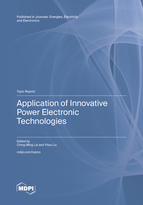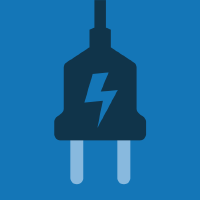Topic Menu
► Topic MenuTopic Editors


Application of Innovative Power Electronic Technologies

A printed edition is available here.
Topic Information
Dear Colleagues,
We would like to invite submissions to this Topic on “Application of Innovative Power Electronic Technologies”. Global energy demand is increasing due to industrial activity and advances in both developing and developed countries. The demand for energy conversion is gradually rising and is accompanied by rapid growth in the areas of sustainable energy, electric vehicle, transportation electrification, industrial automation, and smart grids as well as of the ICT industry. Consequently, power electronics have become key techniques in energy conversion. However, we often face design challenges including to ensure reliability and power efficiency, reduce size and weight, etc.
This Topic on “Application of Innovative Power Electronic Technologies” will contain the results of the most advanced and latest research and will particularly focus on the development and practical considerations for energy conversion and next-generation power electronic techniques.
The topics include but are not limited to:
- New technologies for power electronics;
- Applications of power electronics in smart grid and microgrids;
- Applications of power electronics in electrical energy systems;
- Applications of power electronics in energy storage and UPS (Uninterruptible Power Supply);
- Applications of power electronics in hybrid and electric vehicles.
Prof. Dr. Ching-Ming Lai
Dr. Yitao Liu
Topic Editors
Keywords
- DC/DC, DC/AC (Inverter), AC/DC (Rectifier), AC/AC
- Power Converter, Power Supply, PWM, Voltage Regulation, Power Quality
- Soft Switching, High Efficiency, High Power Density, High Energy Density
- Energy Saving, Energy Management and Energy Storage Technologies
- Battery Management Systems
- Sustainable Energy, Green Energy, Renewable Energy
- Distribution Energy Resources (DERs)
- Distribution Power Generation
- Smart Grid, AC Microgrid, DC Microgrid
- Hybrid and Electric Vehicle
Participating Journals
| Journal Name | Impact Factor | CiteScore | Launched Year | First Decision (median) | APC |
|---|---|---|---|---|---|

Energies
|
3.2 | 5.5 | 2008 | 16.1 Days | CHF 2600 |

Electronics
|
2.9 | 4.7 | 2012 | 15.6 Days | CHF 2400 |

Journal of Low Power Electronics and Applications
|
2.1 | 3.1 | 2011 | 22.2 Days | CHF 1800 |

Electricity
|
- | - | 2020 | 20.3 Days | CHF 1000 |

MDPI Topics is cooperating with Preprints.org and has built a direct connection between MDPI journals and Preprints.org. Authors are encouraged to enjoy the benefits by posting a preprint at Preprints.org prior to publication:
- Immediately share your ideas ahead of publication and establish your research priority;
- Protect your idea from being stolen with this time-stamped preprint article;
- Enhance the exposure and impact of your research;
- Receive feedback from your peers in advance;
- Have it indexed in Web of Science (Preprint Citation Index), Google Scholar, Crossref, SHARE, PrePubMed, Scilit and Europe PMC.

